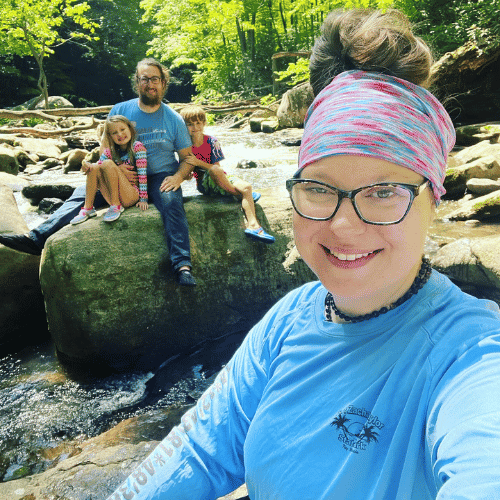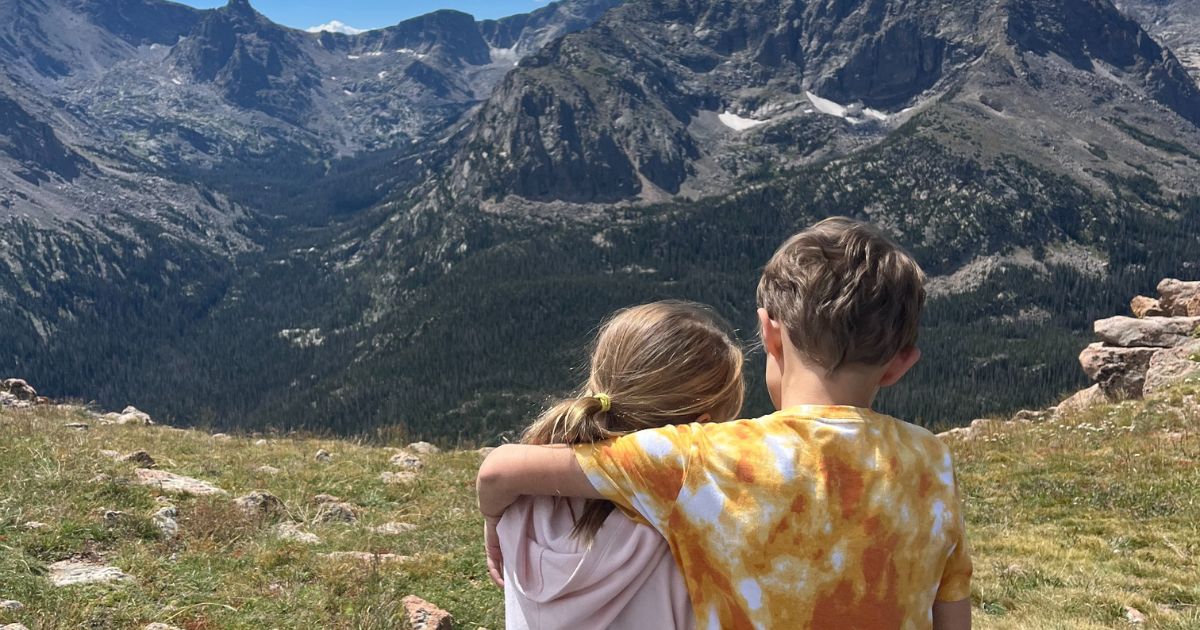Here in the United States, we’re fortunate to have so much access to beautiful, wild places. From national parks and forests to BLM lands to state and county parks and everything in between, there’s tons of options available today for people who are looking to spend some quality time in nature.
That’s why every time I see another news article come out about public lands that are closing to the RV boondocking public, my heart sinks a little. I don’t blame the government agencies who are making the tough decisions to restrict access to these wild spaces. I blame the everyday citizens whose treatment of these public lands has left the government with few other options.
Look, it costs money to manage public lands. And when people disrespect the land by refusing to follow simple Leave No Trace principles during their visit, it costs even more money to maintain them. And that extra funding just isn’t always there. So when the land is being abused by the public, opportunities for RV boondocking are often the first to go. And that’s a shame.
If we’re serious about preserving opportunities for RV boondocking for future generations, there’s some simple things that we can do. And the Leave No Trace principles offer us a perfect framework for making sure that we’re each doing our part. Let’s explore them in more detail:
1. Plan Ahead and Prepare
One of the most important things you can do when RV boondocking is your homework. Many dispersed campsites are located in national forests and on BLM land out west. And the west is prone to fire danger, flooding, and other impacts that can make forest roads and conditions unsafe.
Don’t just assume that because you find a campsite listed on an RV boondocking app or website, that you’re allowed to camp there. Check out the website of the agency that manages the land you want to camp on and make sure there aren’t any closures before you head to a site. And, of course, obey all posted signs.
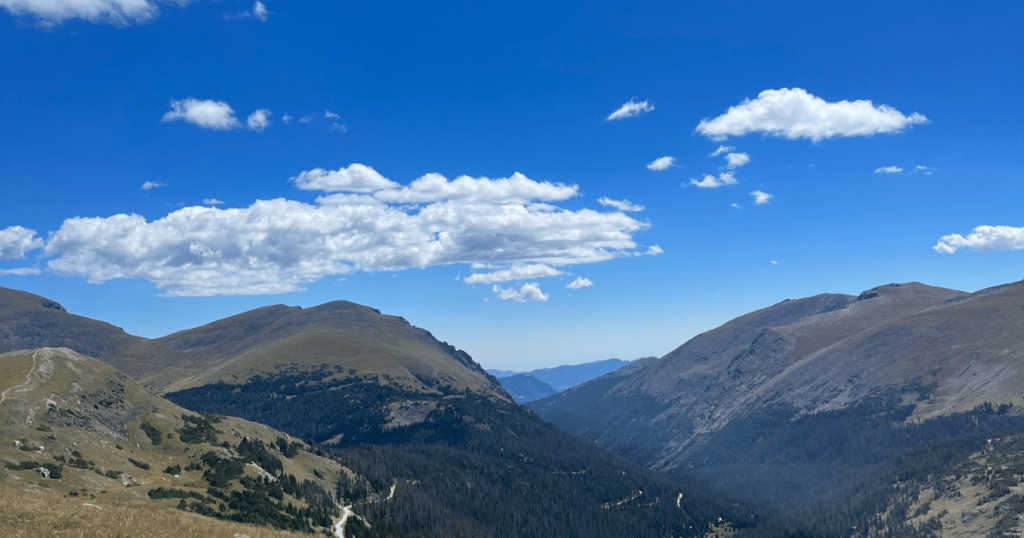
Another important part of planning and preparing for an RV boondocking trip is making sure that you check the weather before you head out. Dispersed campgrounds are in remote areas where access to help may be limited, so anything you can do to avoid an emergency is helpful.
And remember: the chances that you’ll have cell service in these remote camping locations is slim, especially in the heart of a national forest. Remember to download offline maps of the areas you plan to visit. And let family or friends know where you’re going to be and when they should expect to hear from you, just in case.
Get the monthly newsletter.
Spam sucks. So don’t expect any from us! Once a month, we’ll send you personal stories and photos from our travels to inspire you to get wild.
2. Travel and Camp on Durable Surfaces
Scroll down and take a look at the picture below. It may look like we’re parked in the middle of a meadow, but if you look closely, you’ll see that the ground underneath our truck and camper is sand, with no vegetation.
These are the types of campsites that you want to choose when RV boondocking whenever you can. Look for spots where vegetation has already been disturbed by other people who used the area as a campsite. This is helpful because it reduces the impact on the ecosystem. Minimize your impact as much as possible by traveling and camping on areas that are already heavily trafficked.

And make sure that the campsites you’re choosing are durable, steady and safe. Don’t put yourself in a situation where you need to be towed out of a spot because you sunk into the mud or parked in an area that’s prone to flooding.
3. Dispose of Waste Properly
We see trash very frequently while RV boondocking. In fact, just last week while we were camped on public lands just outside of Santa Fe, New Mexico, we participated in a clean-up with several other full time travelers. Together, we filled an entire 30-yard dumpster with trash that had accumulated on the land. It was terribly sad.
As a member of the off grid camping community, it’s all of our responsibilities to make sure that we’re leaving these areas cleaner than we found them. At the very least, ensure that every piece of waste you generate while camping gets properly bagged and carried off the land with you. And if you can, pay it forward by collecting trash that you find during your stay.
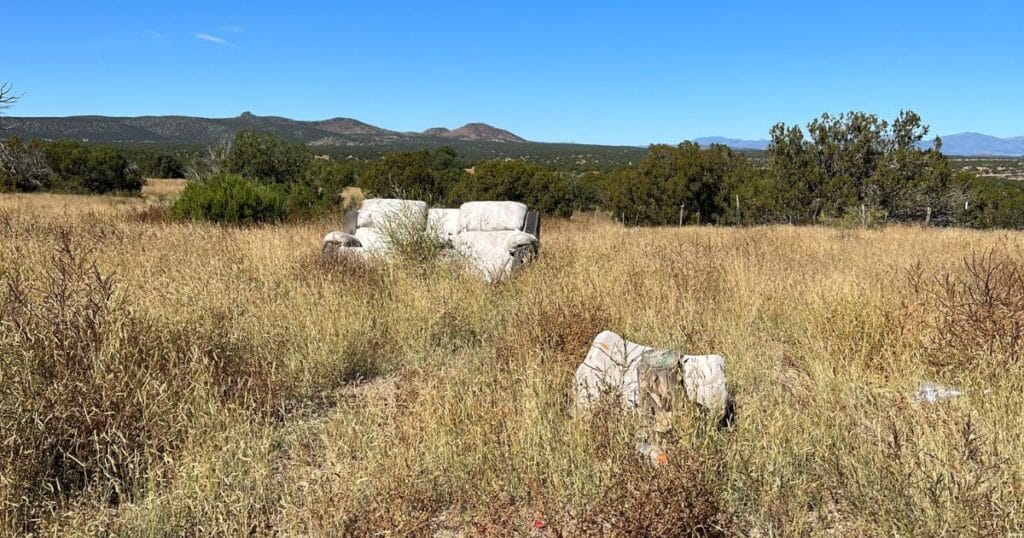
Use the internet to find nearby trash and recycling centers when you’re leaving a boondocking site.
4. Leave What You Find
I’ll be honest: this one was one of the hardest adjustments for us when we began camping in state and national parks full time. Before, we were the kind of people who would take more than our fair share of river pebbles home from our annual summer camping trip. We just didn’t know any better.
But imagine if every camper that visited every beautiful place took just a few pretty rocks home with them. Imagine if every full time traveler who wanted a bouquet of wildflowers for her dinette table just went out and harvested them every few days. That’s not sustainable. And it’s not fair to future travelers who want to enjoy the same experience you did today.
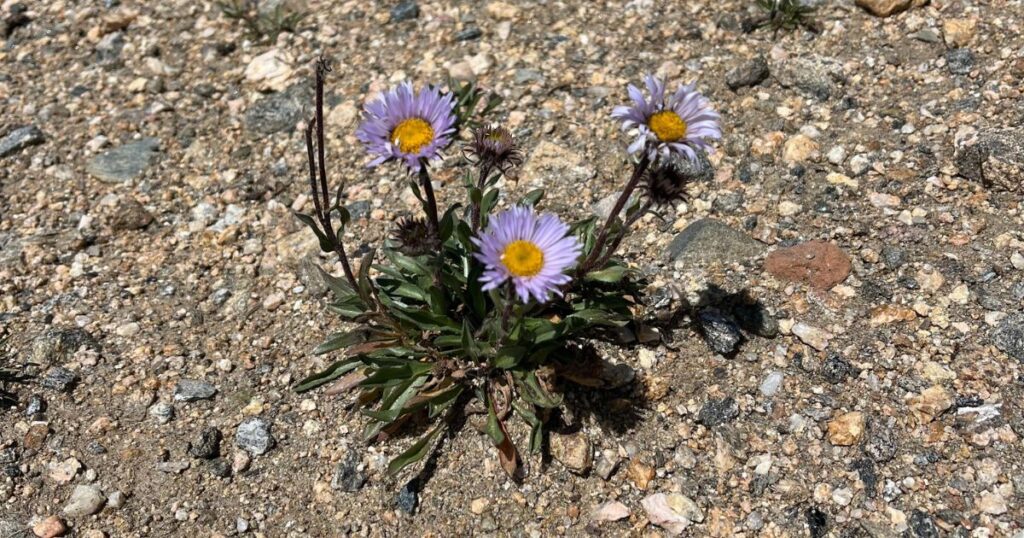
So, as tempting as it may be, don’t take anything from the campsites you stay at while RV boondocking (unless you have a a permit!). Leave the land how you found it for future campers to enjoy.
5. Minimize Campfire Impacts
When you’re camping in a new location, especially in an area that you aren’t familiar with, remember to look into the fire danger. If local officials recommend against having a fire, respect that boundary and don’t have one.
If you are going to have a fire, make sure that you do so in designated fire rings or other safe areas. And always keep several gallons of water next to you while enjoying the fire so you can put it out immediately if the winds become too strong or other dangerous conditions develop.
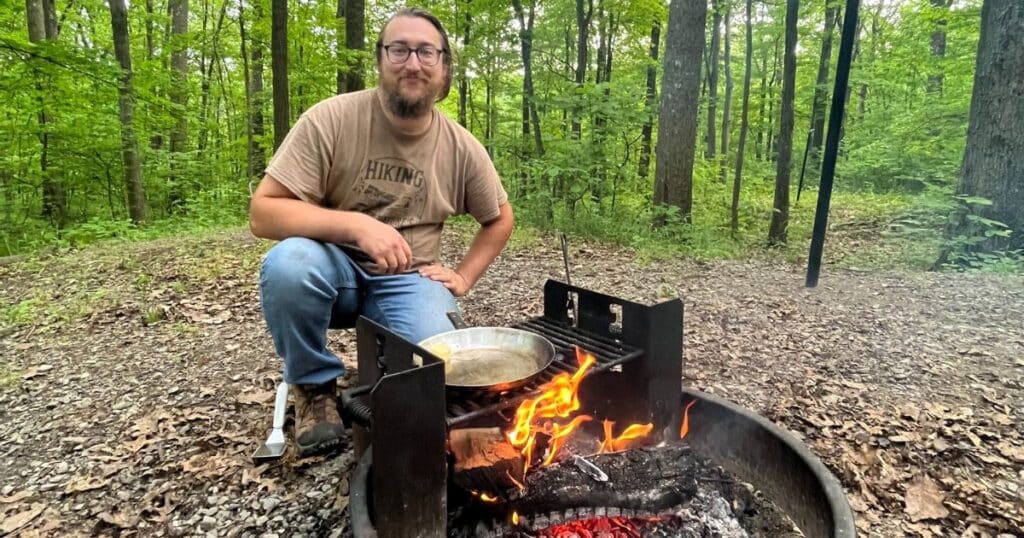
Remember: the most important thing when having a fire is to put it out completely when you’re done. You should completely drown out any fires that you have with so much water that you’re able to stick your hands down deep into the coals without getting burned. It needs to be soaked.
6. Respect Wildlife
When you’re RV boondocking in national forests and on other publicly owned lands, remember: the wildlife that live there consider that land their home. You are a guest in their space, not the other way around.
Do not feed wildlife. Feeding wildlife can change their behaviors in ways that you might not expect. It can make certain animals more aggressive around people, making altercations more likely and forcing officials to kill the animals to prevent human injury. But even feeding less dangerous animals is harmful because it can make them dependent on generous humans for food. So just don’t do it.
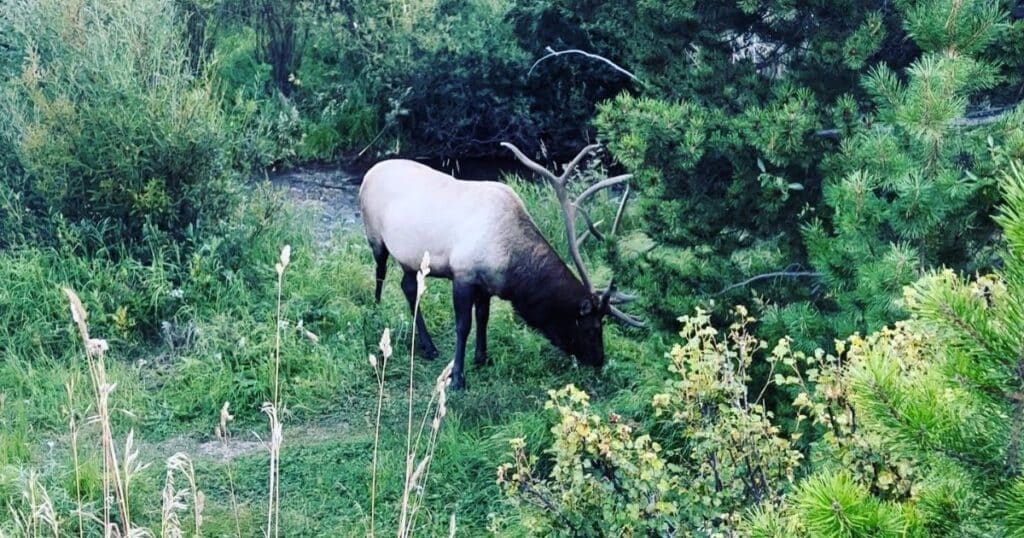
When RV boondocking, make sure that you observe wildlife from a safe distance. If an animal comes close to you (like the elk in the photo above came close to us), remain calm and quiet and retreat to a safe distance.
7. Be Considerate of Other Visitors
In some RV boondocking circumstances, you’ll find yourself in very remote locations without any neighbors. But many other times, there will be other people around who are trying to visit and enjoy nature just like you.
Chances are good that these people came to enjoy the sounds of nature, not the sounds of your music blaring, you cheering on your favorite sports team on the TV, or your generator running at all hours of the night. Be considerate and respectful of your neighbors.
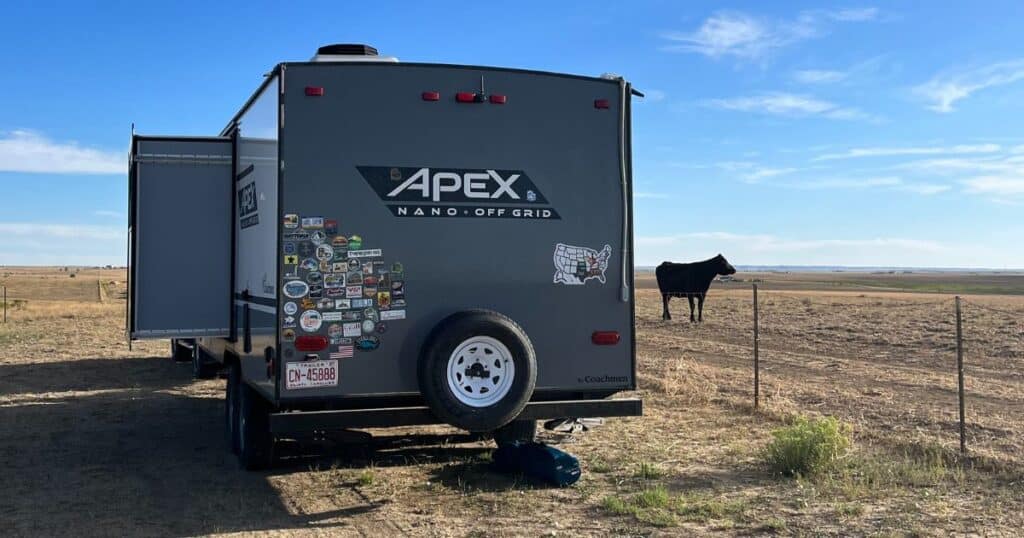
We hope these ideas helped you think through some of the different ways that you can help preserve RV boondocking as an opportunity for future generations. We are so lucky to have so many opportunities to connect with nature for free on public lands today. Let us not abuse them or take them for granted.
